Abstract
The tails of baby mice grow rapidly and independently of environmental temperature because they are kept warm by their mothers. After weaning, at approximately 3 weeks of age, tail growth is strictly related to environmental temperatures. During the first 2 weeks after weaning growth rates of 1.2-1.4 mm/day/tail were seen at 33 degrees and a maximum of 2.43 mm/day/tail was observed in one group kept at 36 degrees. Animals kept at 8 degrees or 4 degrees showed tail growth rates of 0.4 mm/day or less. However, the tails of animals transferred from either hot to cold or cold to hot during their first 2 weeks after weaning immediately grew at the same rate as those of animals kept in these conditions continuously, thus indicating that heat was acting directly on bone growth. The tails of animals kept continuously in the hot environment at 33 degrees completed their growth early so that their growth rate fell below that of controls after about 3 weeks of treatment (when they were 6-7 weeks old) and below that of "cold" animals after about 4 weeks (7-8 weeks old). The tails of the "control" and "cold" animals grew slowly for a very long time, 150-195 days. Even so, because of the very rapid early growth of tails in the hot environment, their final length was always greater than either the "control" or "cold" tails.
Full text
PDF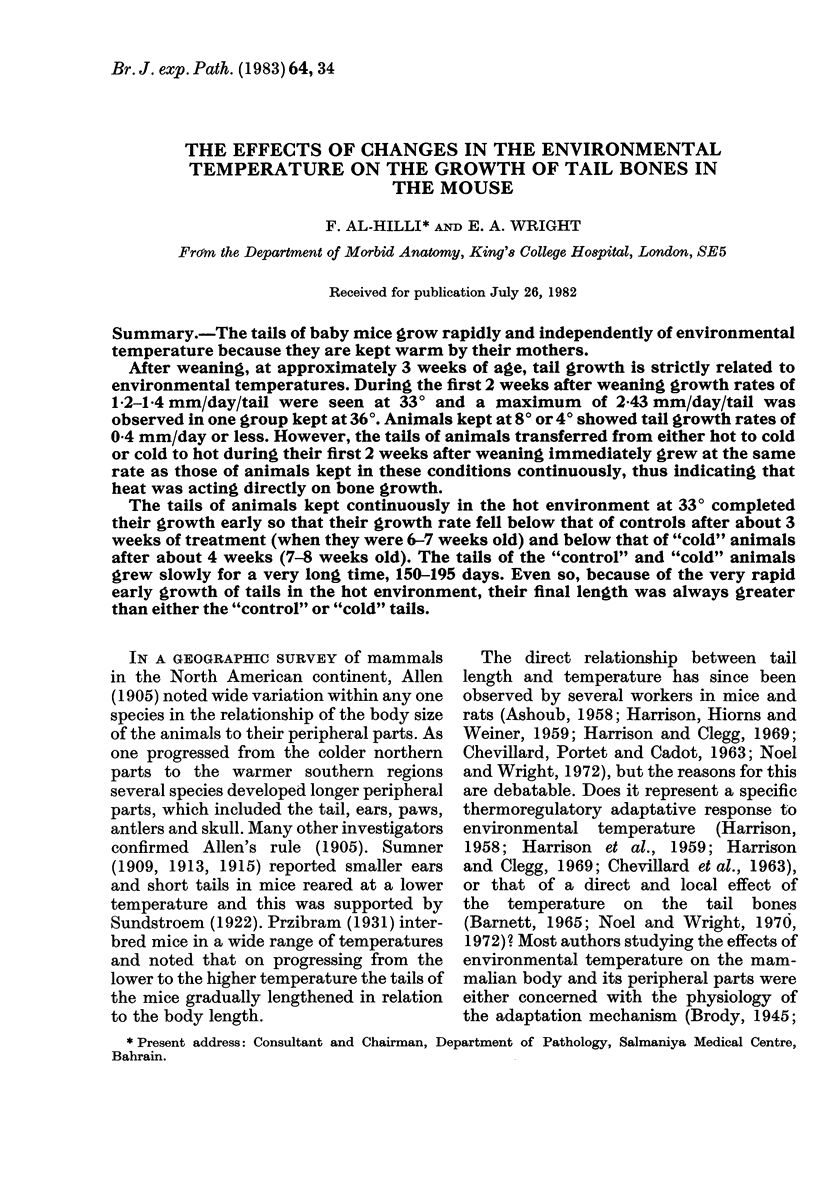
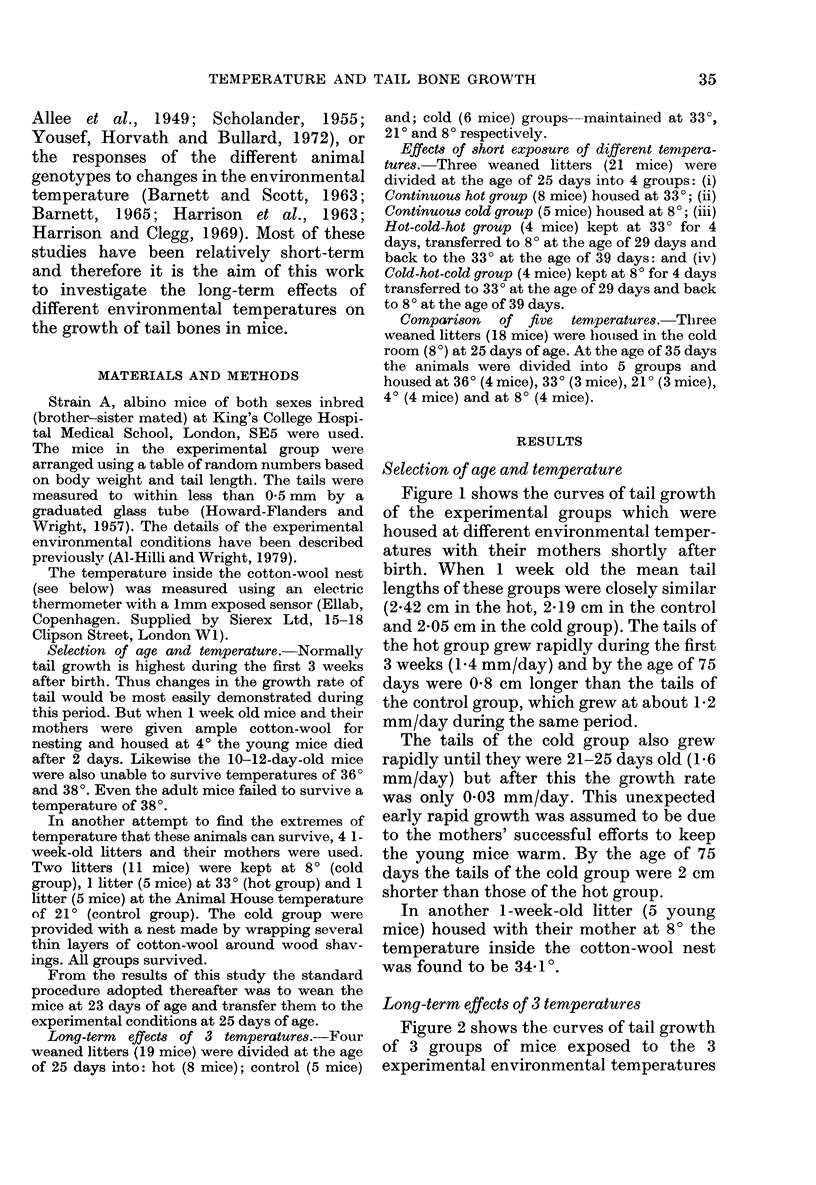
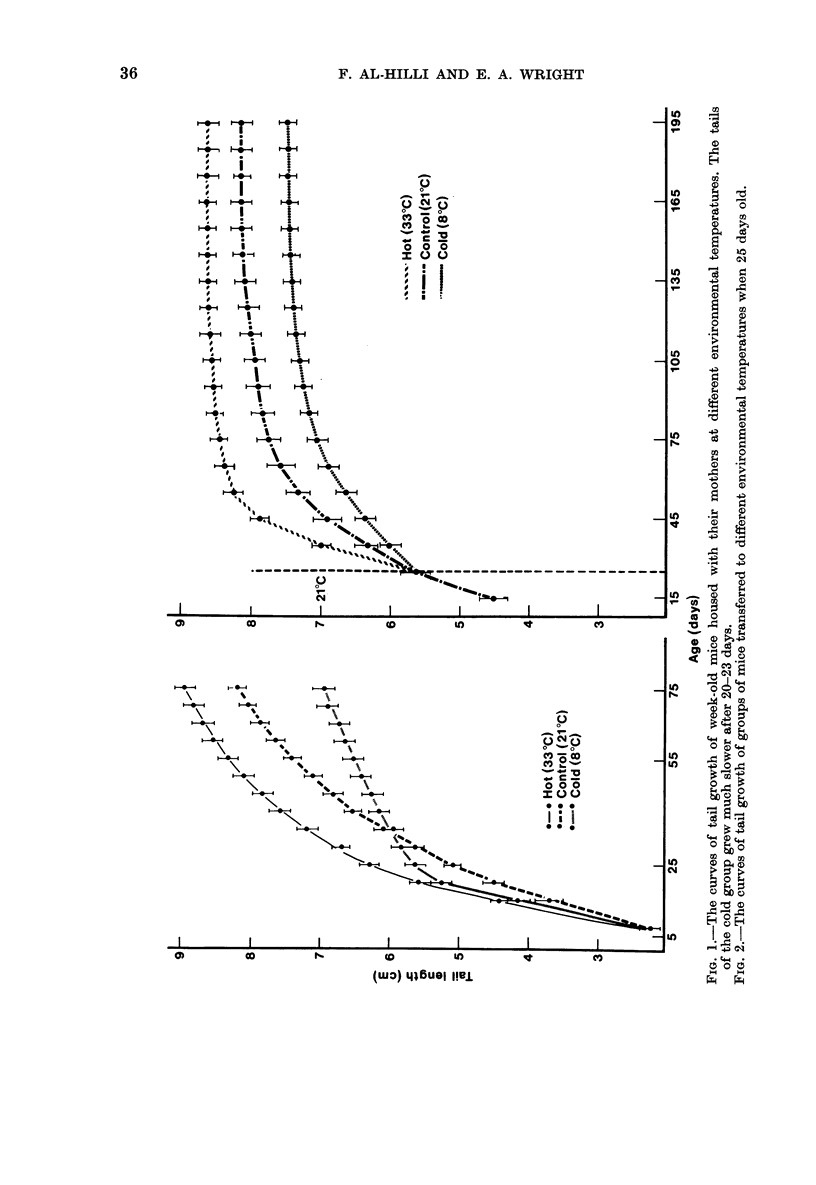

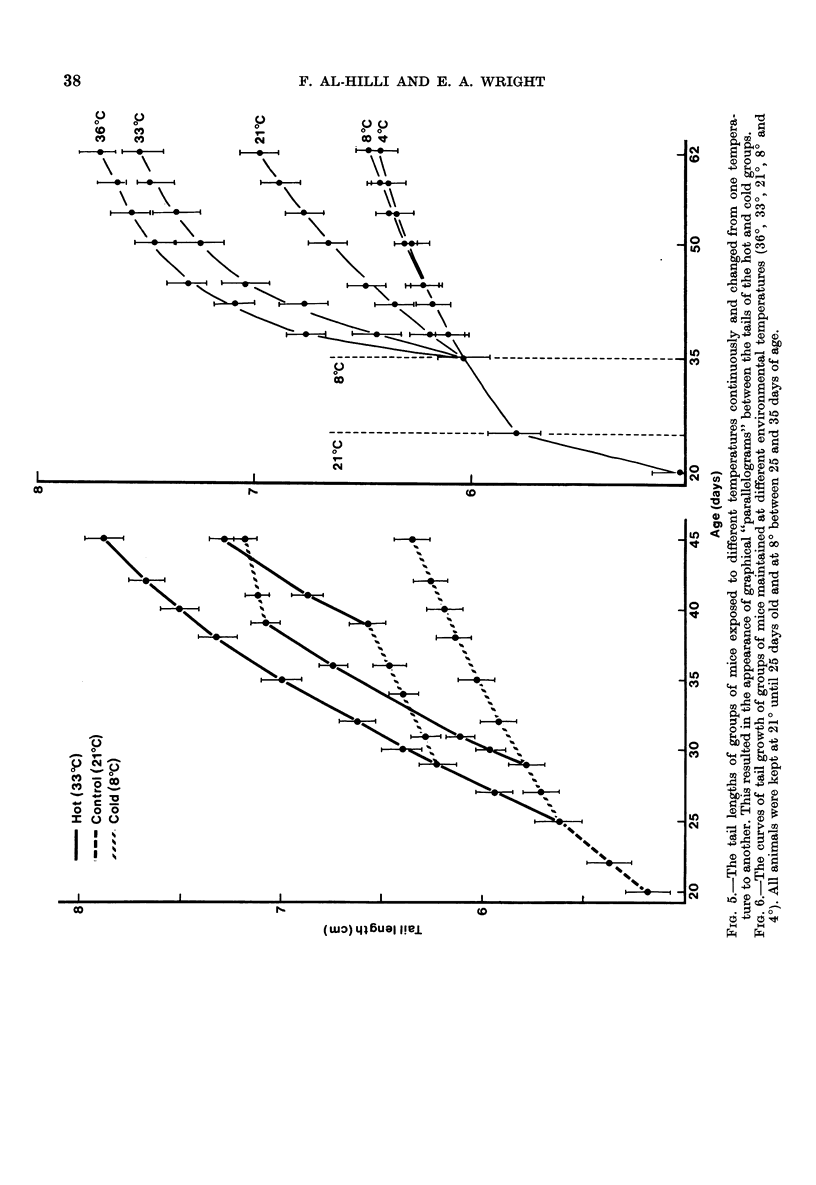
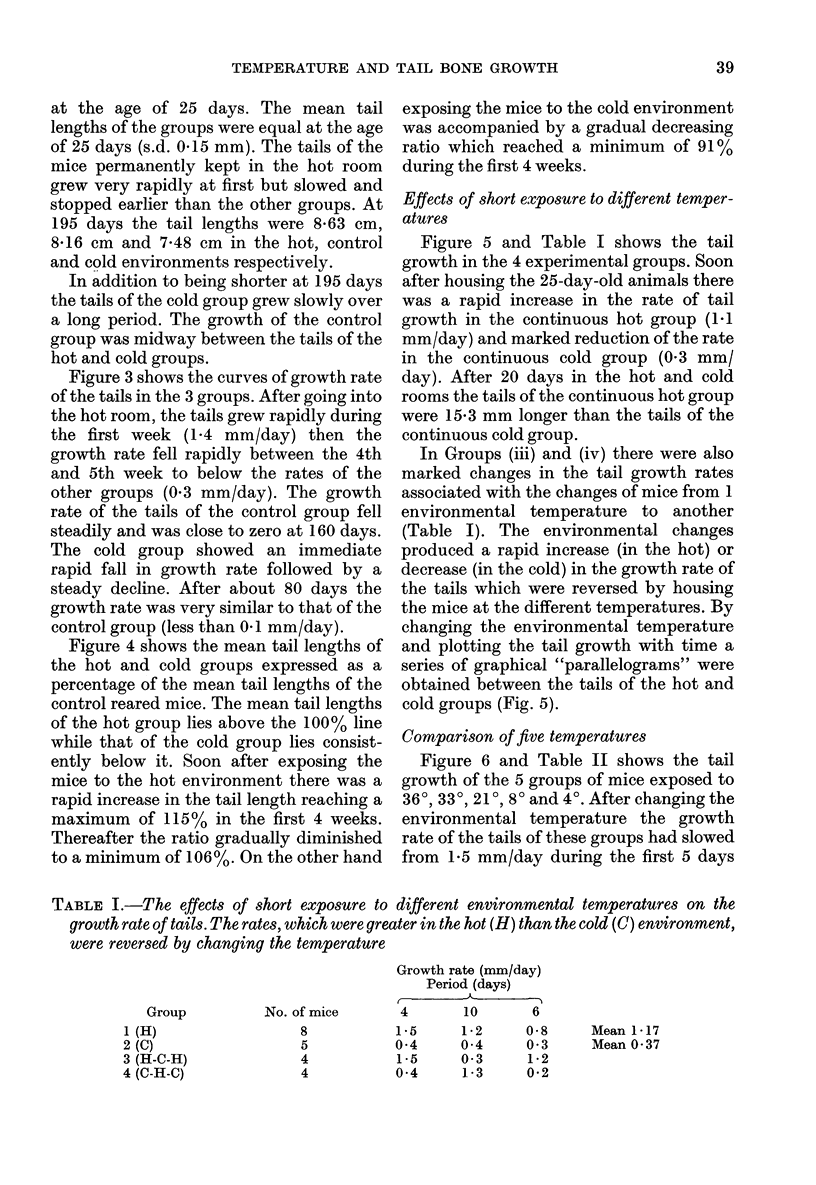
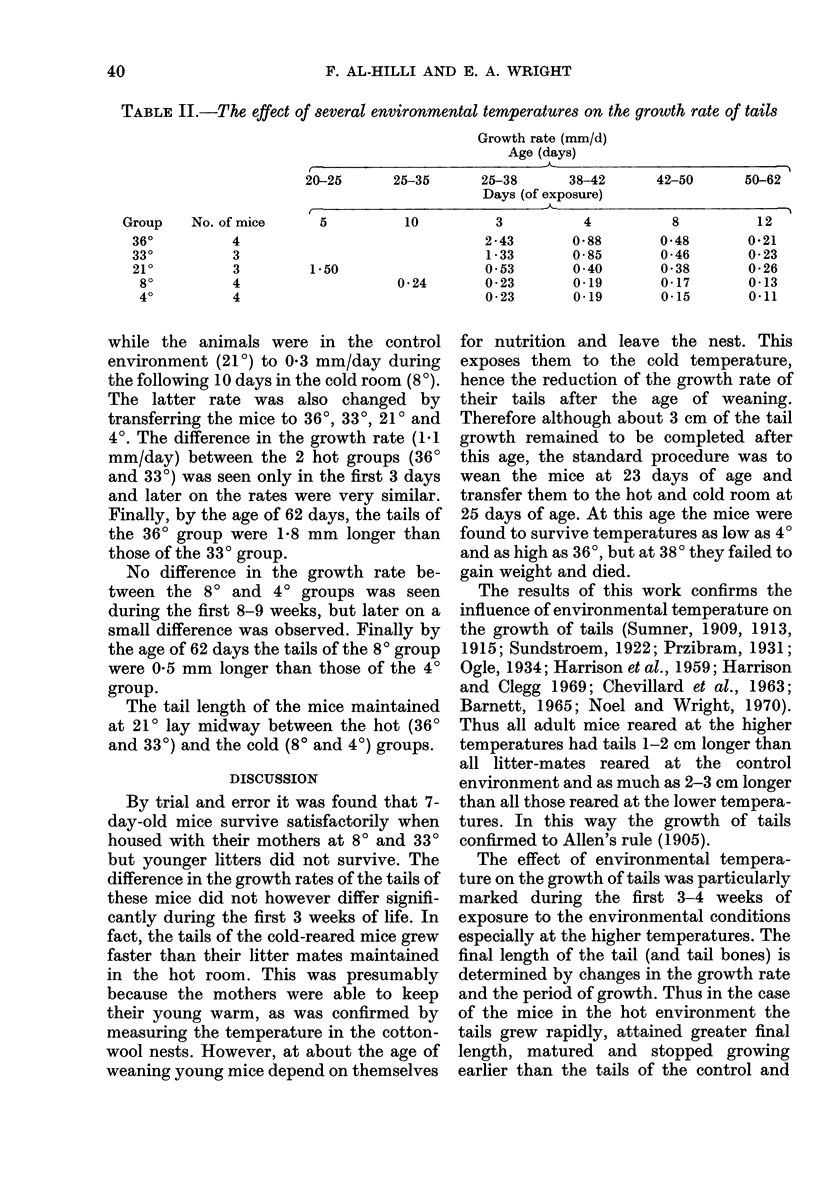
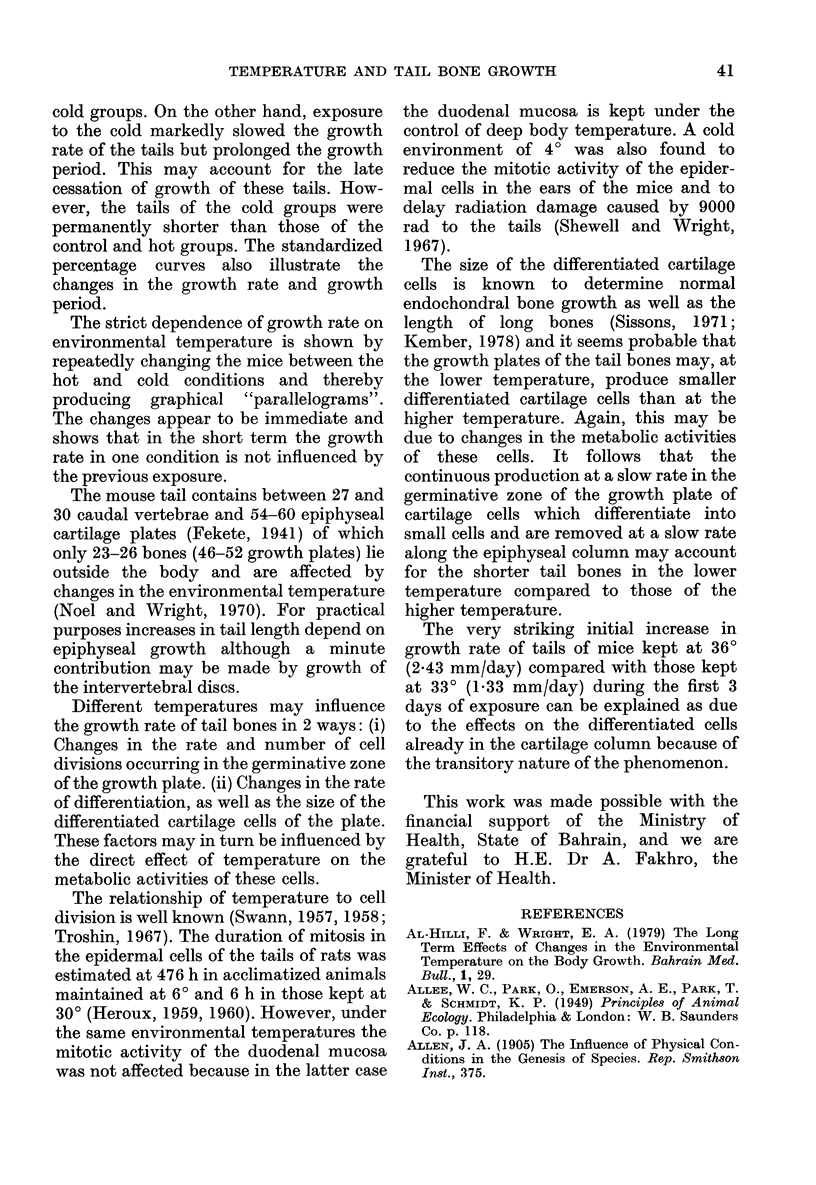
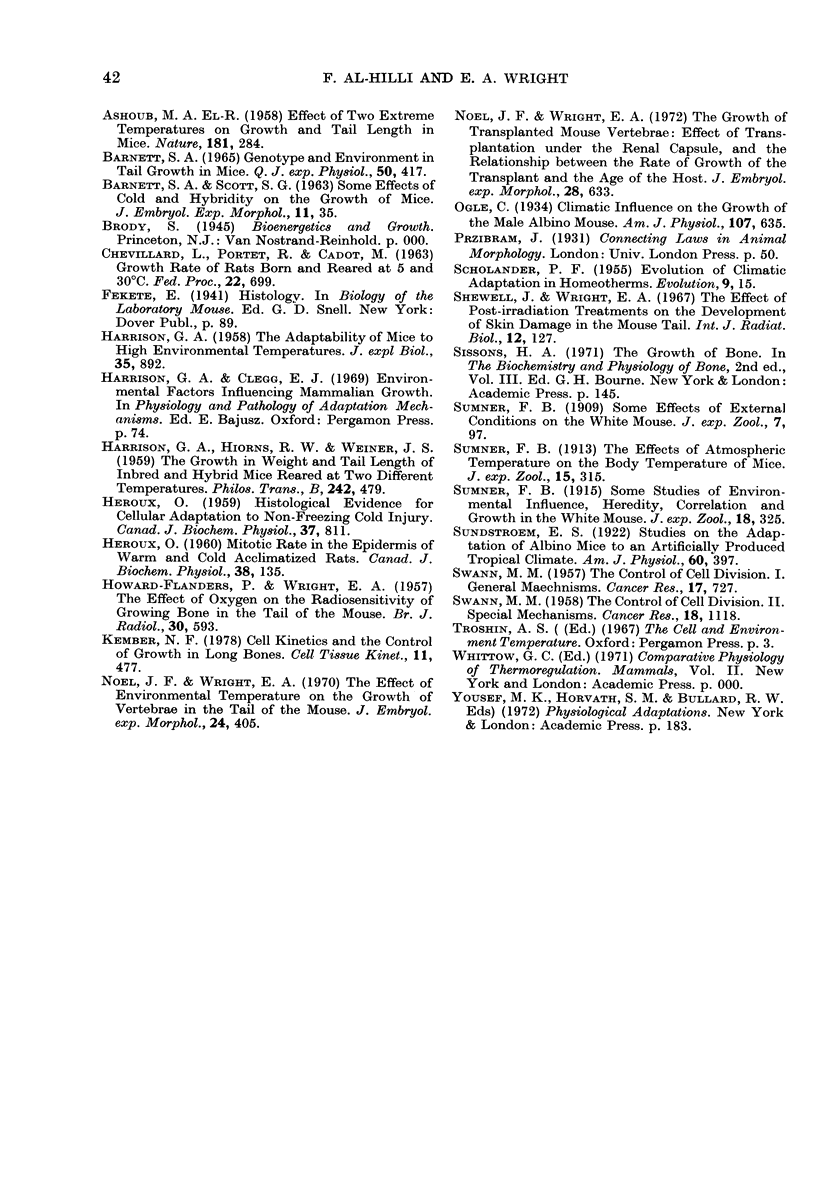
Selected References
These references are in PubMed. This may not be the complete list of references from this article.
- ASHOUB M. A. Effect of two extreme temperatures on growth and tail-length of mice. Nature. 1958 Jan 24;181(4604):284–284. doi: 10.1038/181284a0. [DOI] [PubMed] [Google Scholar]
- BARNETT S. A., SCOTT S. G. Some effects of cold and of hybridity on the growth of mice. J Embryol Exp Morphol. 1963 Mar;11:35–51. [PubMed] [Google Scholar]
- Barnett S. A. Genotype and environment in tail length in mice. Q J Exp Physiol Cogn Med Sci. 1965 Oct;50(4):417–429. doi: 10.1113/expphysiol.1965.sp001807. [DOI] [PubMed] [Google Scholar]
- CHEVILLARD L., PORTET R., CADOT M. Growth rate of rats born and reared at 5 and 30 C. Fed Proc. 1963 May-Jun;22:699–703. [PubMed] [Google Scholar]
- HEROUX O. Mitotic rate in the epidermis of warm- and cold-acclimated rats. Can J Biochem Physiol. 1960 Feb;38:135–142. [PubMed] [Google Scholar]
- HOWARD-FLANDERS P., WRIGHT E. A. The effect of oxygen on the radiosensitivity of growing bone in the tail of the mouse. Br J Radiol. 1957 Nov;30(359):593–599. doi: 10.1259/0007-1285-30-359-593. [DOI] [PubMed] [Google Scholar]
- Kember N. F. Cell kinetics and the control of growth in long bones. Cell Tissue Kinet. 1978 Sep;11(5):477–485. doi: 10.1111/j.1365-2184.1978.tb00820.x. [DOI] [PubMed] [Google Scholar]
- Noel J. F., Wright E. A. The effect of environmental temperature on the growth of vertebrae in the tail of the mouse. J Embryol Exp Morphol. 1970 Sep;24(2):405–410. [PubMed] [Google Scholar]
- Noel J. F., Wright E. A. The growth of transplanted mouse vertebrae: effects of transplantation under the renal capsule, and the relationship between the rate of growth of the transplant and the age of the host. J Embryol Exp Morphol. 1972 Dec;28(3):633–645. [PubMed] [Google Scholar]
- SWANN M. M. The control of cell division: a review. II. Special mechanisms. Cancer Res. 1958 Nov;18(10):1118–1160. [PubMed] [Google Scholar]
- SWANN M. M. The control of cell division; a review. I. General mechanisms. Cancer Res. 1957 Sep;17(8):727–757. [PubMed] [Google Scholar]


